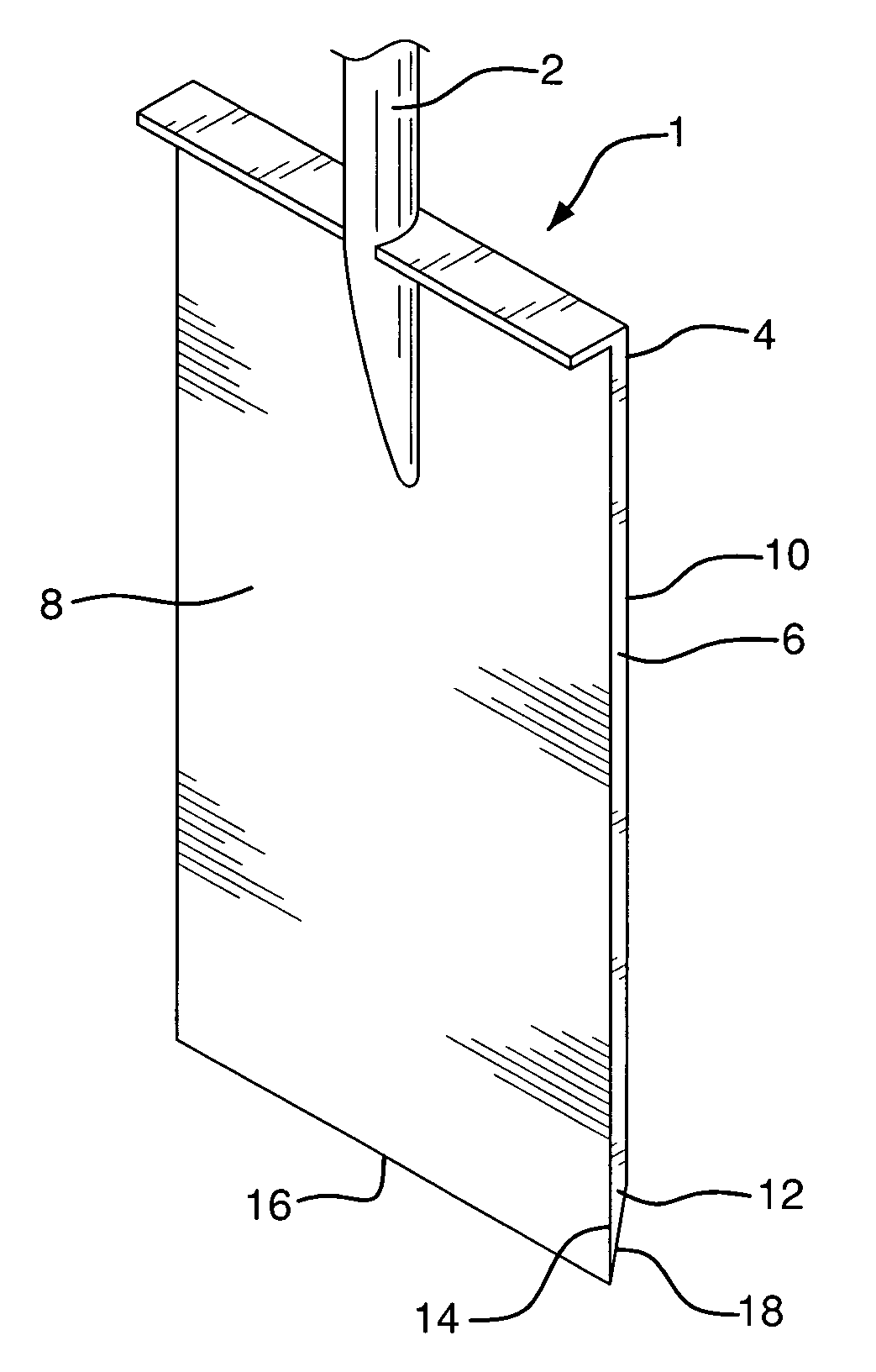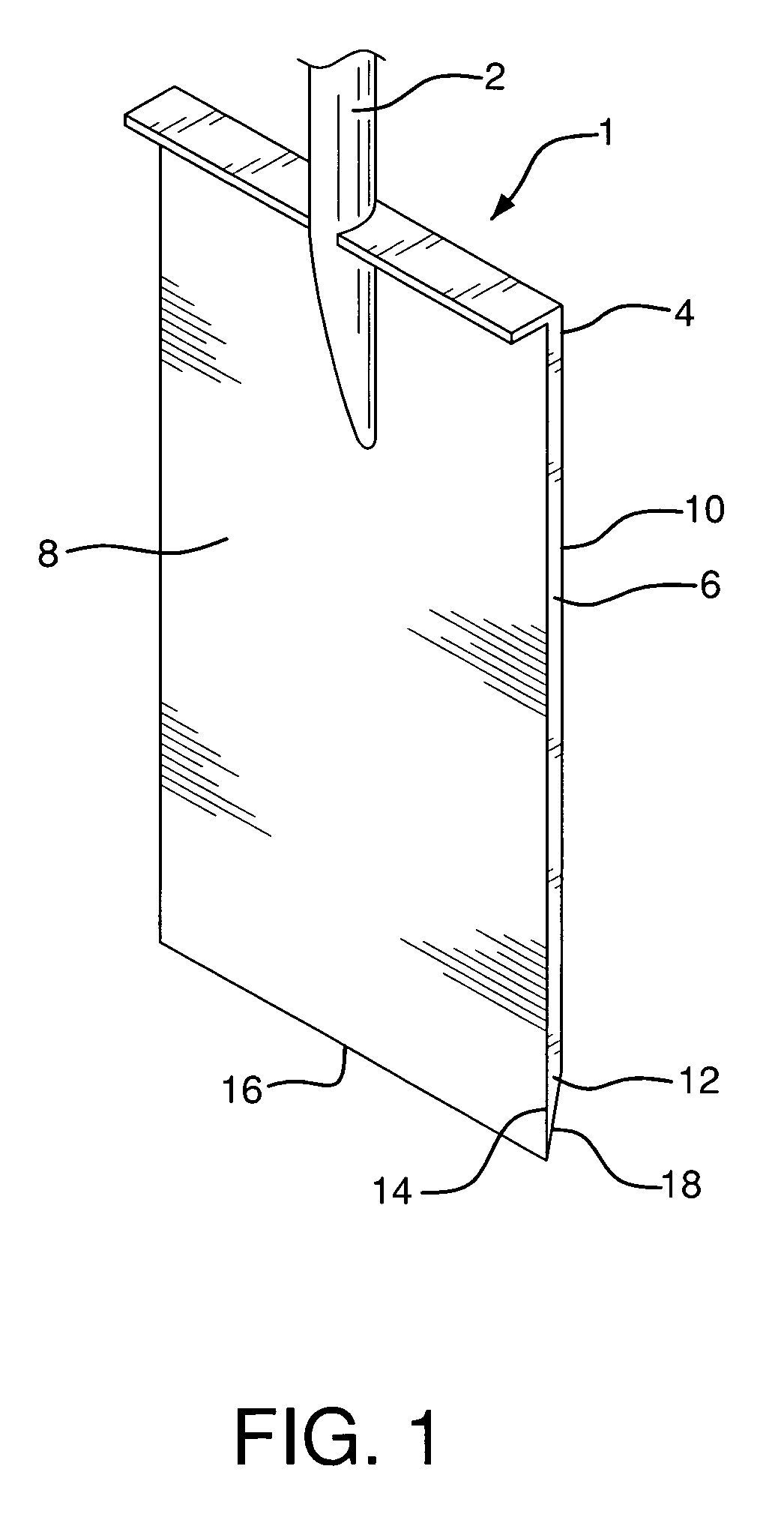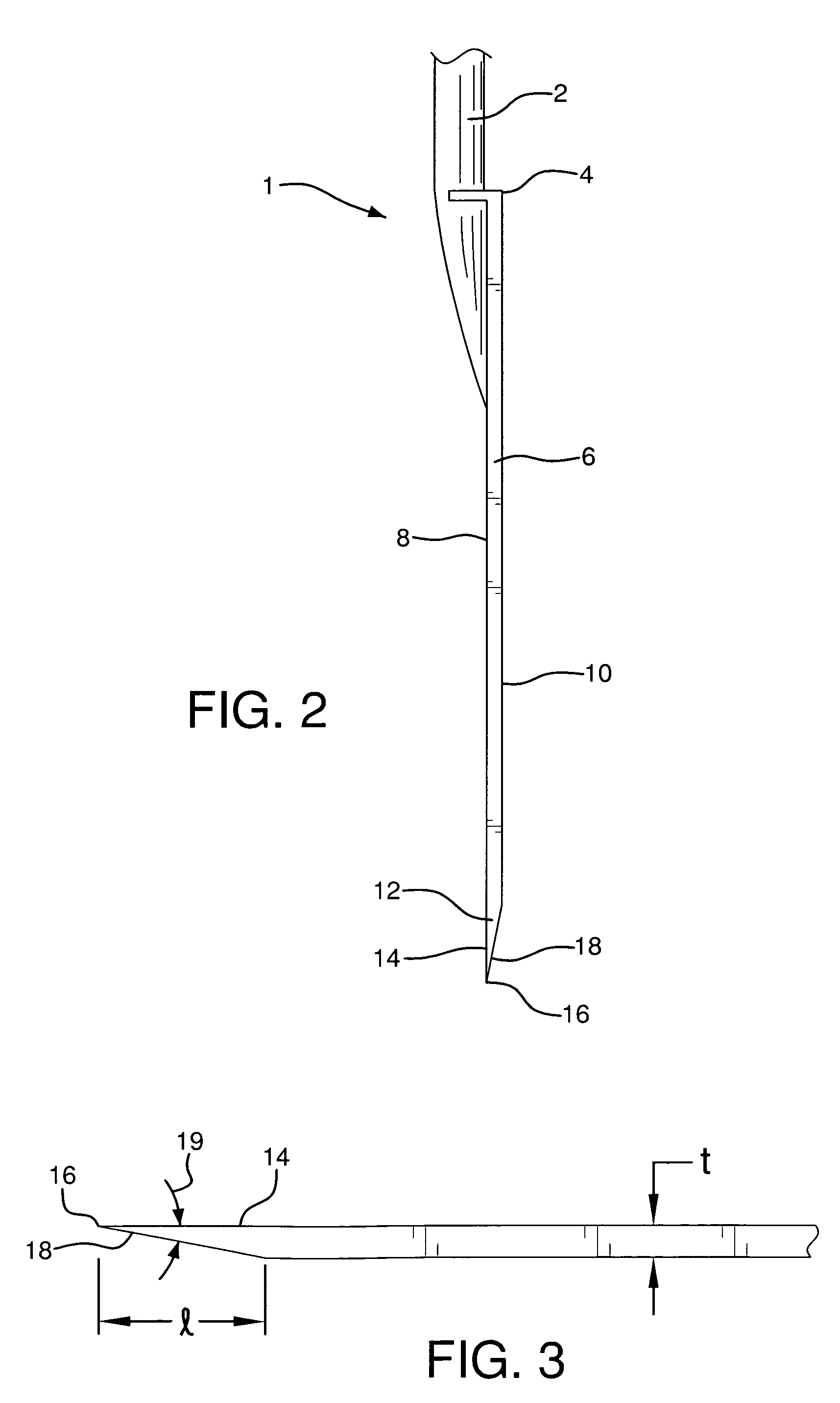Self-sharpening tool blade and method
- Summary
- Abstract
- Description
- Claims
- Application Information
AI Technical Summary
Benefits of technology
Problems solved by technology
Method used
Image
Examples
Embodiment Construction
[0018]Tool 1 comprises handle 2 and blade 4, configured to penetrate into the surface of the ground and dig within the ground. Blade 4 comprises rear section 6 having top side 8 and back side 10, and tapered front edge section 12 having top surface 14 contiguous with top side 8 of rear section 6. Top surface 14 is shown as being in the same transverse plane as top side 8. It is within the scope of the invention and is contemplated that top surface 14 could be configured at an angle to top side 8.
[0019]Front edge section 12 also comprises forwardmost edge tip 16 and bottom surface 18 tapered at an acute taper angle 19 from tip 16 and extending to back side 10 of rear section 6 of blade 4. Tip 16 is a sharp edge surface configured for penetration of the ground, cutting into roots, etc.
[0020]In use, front edge section 12 of blade 4 is compelled into and penetrates surface 20 of ground 22 to remove material, in most cases soil. As this is done, blade 4 itself is driven and then inserted...
PUM
| Property | Measurement | Unit |
|---|---|---|
| Length | aaaaa | aaaaa |
| Thickness | aaaaa | aaaaa |
| Force | aaaaa | aaaaa |
Abstract
Description
Claims
Application Information
 Login to View More
Login to View More - R&D Engineer
- R&D Manager
- IP Professional
- Industry Leading Data Capabilities
- Powerful AI technology
- Patent DNA Extraction
Browse by: Latest US Patents, China's latest patents, Technical Efficacy Thesaurus, Application Domain, Technology Topic, Popular Technical Reports.
© 2024 PatSnap. All rights reserved.Legal|Privacy policy|Modern Slavery Act Transparency Statement|Sitemap|About US| Contact US: help@patsnap.com










